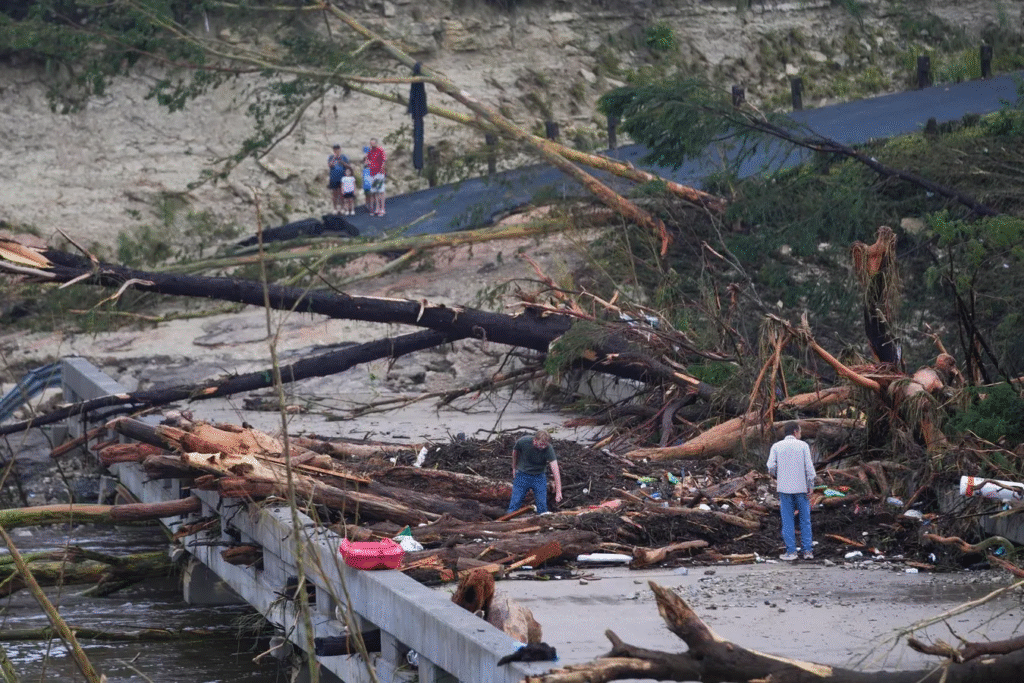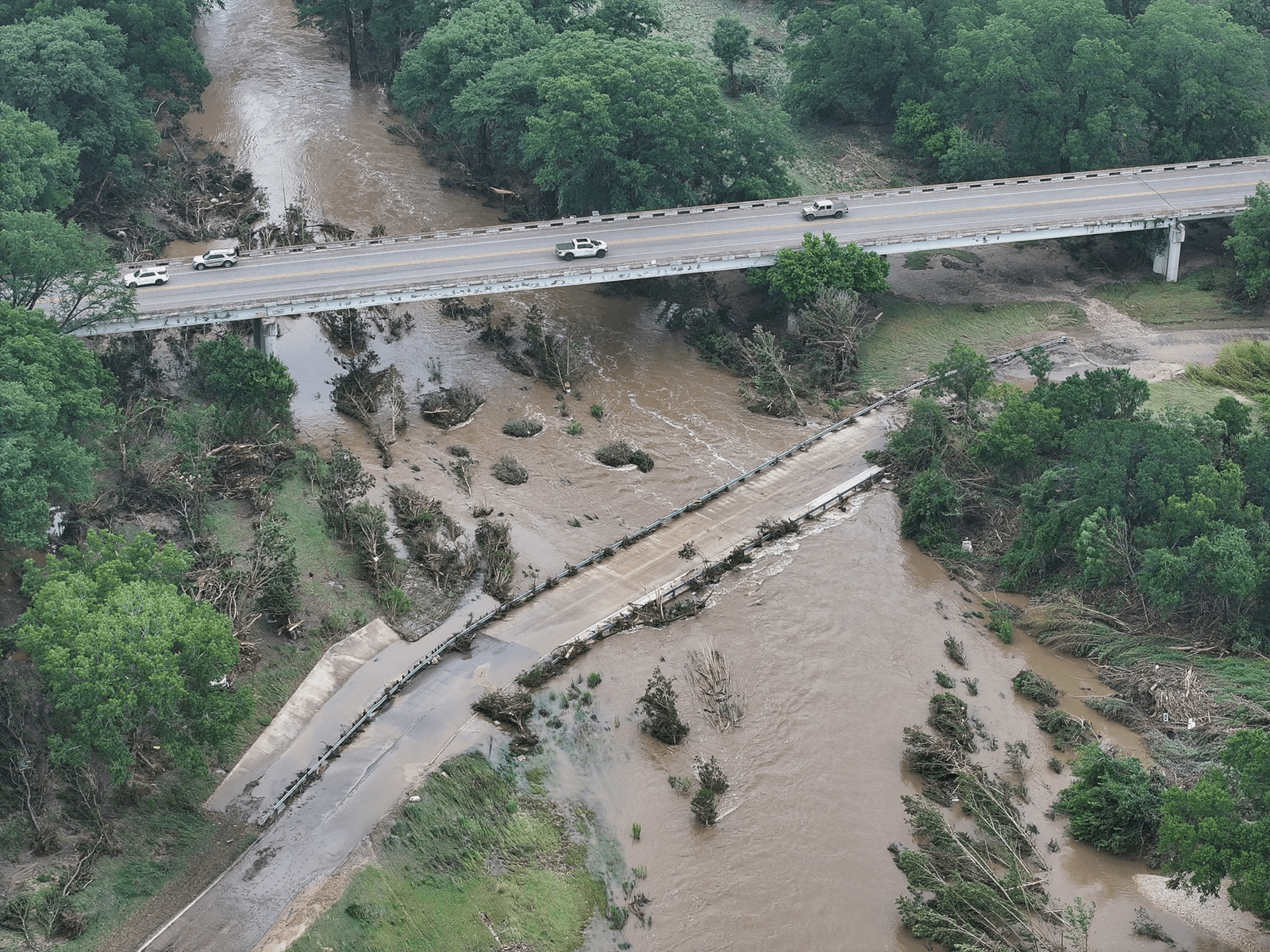In the early morning hours of Independence Day, torrential rain pounded sleeping communities across central Texas, catching residents off guard. At the time, no one could have predicted just how catastrophic the storm would become.
Over the course of the weekend, flash floods swept through entire neighborhoods, submerging homes and campsites and carrying away unsuspecting residents. The devastation was swift and widespread. By Tuesday, the death toll had surpassed 100 across the state, and search-and-rescue operations were still underway.
As affected communities begin the long road to recovery, pressing questions are being asked: How did this disaster escalate so quickly? And could it have been prevented?
The truth is, a convergence of multiple high-risk conditions created a perfect storm—one that turned an already vulnerable region into a disaster zone.
A Deluge on Drought-Stricken Ground
Warnings from the National Weather Service began on Thursday, alerting Kerr County to the potential for flooding. In just three hours, Hunt, Texas, recorded about 6.5 inches of rain—an extreme weather event that statistically occurs only once in a century.
This heavy rainfall fell on land suffering from severe drought, some of the worst in the nation. Within hours, water levels surged uncontrollably.
The Guadalupe River, which winds through several popular summer camps in the area, rose from around 3 feet to a staggering 30 feet on Friday alone.
This kind of sudden and intense flooding is becoming more frequent, experts warn, as global climate change pushes weather extremes to new levels. Texas has already experienced several major flooding events in 2025, and last year the United States recorded an unprecedented number of flash flood emergencies.
Camps Built in High-Risk Flood Zones
Among the hardest-hit areas were summer camps lining the Guadalupe River. At least 18 camps are situated along the riverbank, including Camp Mystic, an all-girls Christian camp that had about 750 campers on-site when the floodwaters surged.
When the storm hit Friday, the river near Camp Mystic rose more than 20 feet in under two hours. The destruction was brutal. At least 12 camps sustained flood damage, with some sites left in ruins. Photos from Camp Mystic show cabins torn apart by the water, caked in mud and debris, with mattresses and personal belongings scattered across the floor. The waterline on some buildings nearly reached the doorways.
The human toll was heartbreaking. Officials confirmed that 27 campers and counselors from Camp Mystic lost their lives in the flooding, and 11 others—10 girls and one counselor—remain missing.
While parts of its property also fall within the 100-year flood zone or the Guadalupe floodway, many buildings are located in relatively lower-risk areas.

The Hidden Danger of Nighttime Flooding
Flash floods are dangerous at any time, but they’re especially perilous when they occur overnight. When the storm began in the early hours of Friday morning, most people were fast asleep—unaware of the unfolding emergency.
In communities like Hunt, where cell phone service is limited, it’s even harder to receive critical weather alerts. But even in areas with good coverage, residents are often bombarded with frequent weather warnings, leading to what experts call “alert fatigue.”
Texas Hill Country frequently experiences summer thunderstorms that trigger flash flood watches and warnings. Over time, these alerts can lose their urgency in the public’s mind, making it easier for people to dismiss them—until it’s too late.
Despite the challenges, emergency warnings were issued in a timely manner. Kerr County was placed under a flash flood warning at 1:14 a.m. on Friday. A series of escalating alerts followed, including a flash flood emergency for the county at 4:03 a.m. The city of Kerrville received its own emergency alert at 5:34 a.m.
But darkness made escape even more difficult. Navigating flooded roads at night is treacherous. Rising water levels are hard to detect, and hazards like debris or downed power lines are nearly impossible to see in time.
Kerr County Judge Rob Kelly summed up the shock many local officials felt: “We had floods all the time,” he said.
A Disaster Fueled by Climate, Geography, and Timing
This tragic flood was not the result of a single misstep or isolated weather event. Instead, it was a deadly convergence of several high-risk factors:
Extreme rainfall falling in a very short time.
Severe drought conditions that prevented proper water absorption.
Communities and camps located in known floodplains.
Nighttime flooding that caught people off guard.
Limited access to emergency alerts in rural areas.
Recurring weather warnings that dulled the urgency of response.
Together, these elements created a worst-case scenario that devastated central Texas over the holiday weekend.
As recovery and rescue operations continue, the disaster is prompting a deeper conversation about the need for improved infrastructure, better floodplain planning, and more effective alert systems—especially as climate change makes such events more common.
For now, families mourn, communities rally, and questions remain about how best to prevent another tragedy like this from happening again.
